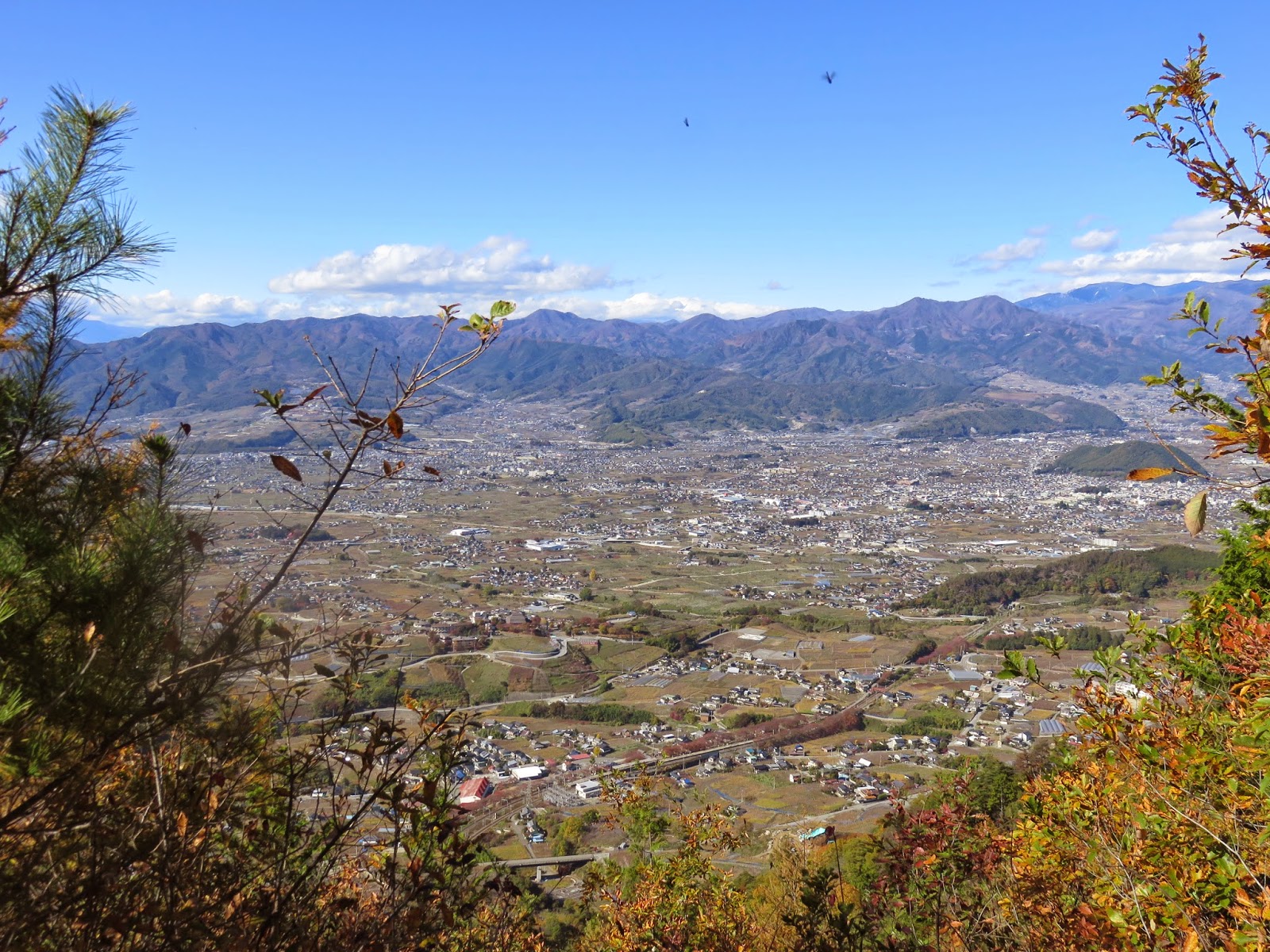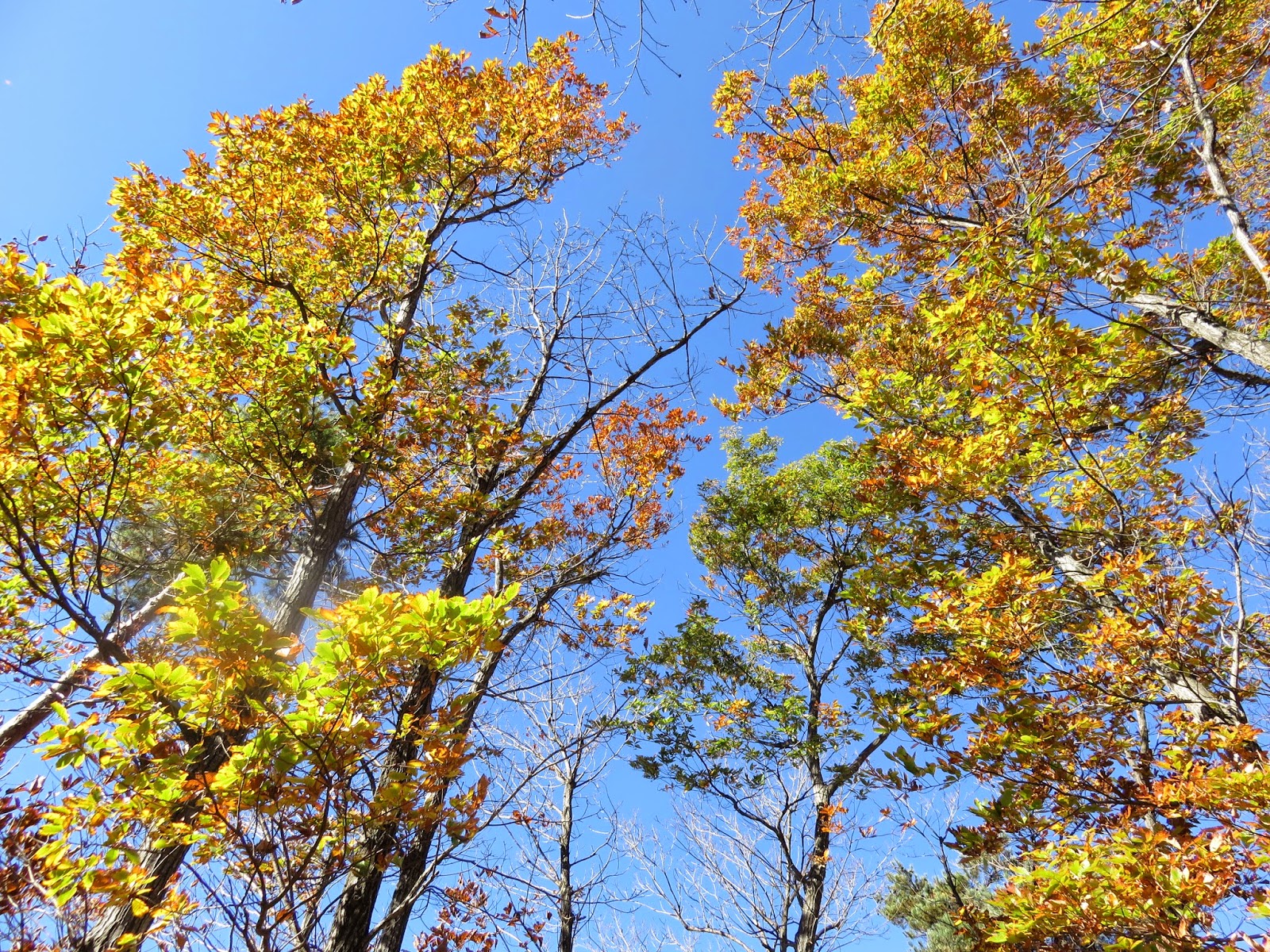When you
think of Japanese culture and industry, wine might not be the most
iconic piece of heritage that comes to mind. Consider, however,
Katsunuma (勝沼),
in Kōshū
(甲州),
Yamanashi Prefecture, just west of Tokyo. Look closely at those
buildings and fields.
The
large buildings are wineries and wine-related facilities, and the
fields are not rice paddies, but vineyards, producing Japan's most
celebrated Kōshu
variety of grapes. Katsunuma is the heart of Japanese wine
production, responsible for almost half the country's total wine
output, and if you believe the stories, this industry traces its
origins back almost 1300 years.
Kōshū
gets
its name from an abbreviation for Kai (甲斐),
the traditional province that became Yamanashi during the Meiji
period (1868-1912). It is a landlocked zone centred upon the Kōfu
Basin, which is ringed by towering mountains covered in forests.
These rise to the north and west into the Japanese Alps; give way to
the south to Mount Fuji; and extend east into the mountains of
Oku-Tama (Tokyo) and Chichibu (Saitama).
 |
| Looking west across the Kōfu Basin. The large road is National Route 20, which roughly follows the old Edo-period Kōshū Kaidō (甲州街道) highway discussed here. |
Katsunuma
sits on the eastern edge of this basin, and above it rises
1,120m-high Kōshū
Takaō-san
(甲州高尾山)
– not to be confused with
the
other Takaō-san
in Tokyo. What follows here is a hiking route that takes in Kōshū's
wine-making heritage, including a very old temple where it is said to
have first begun, then launches into the bright mixed forests and
breathtaking autumn ridges, where some more secretive shrines and
temples hide in the deep wilds. This route can be walked in 5-6
hours, but be prepared for a punishingly strenuous climb from the
temple to the Kōshū
Takaō-san
summit.
To
get there, take the JR
Chūō Line
west out of Tokyo: past Tachikawa, past Hachiōji, past Takao (where
you may have to change trains but on the same platform) and past
Ōtsuki – but not as far as Kōfu. Get off at Katsunuma
Budōkyō (勝沼ぶどう郷)
station (“Katsunuma grape district”), where this walk begins and
ends.
When
you exit the station you will see “Grape Hill” (Budō
no Oka,
ぶどうの丘)
straight across from you. This is a famous wine centre with a hotel,
restaurant, hot springs, wine cellar and wine tasting facilities,
which you may wish to visit if time permits.
 |
| Budō no Oka (ぶどうの丘). |
As
soon as you exit the station turn left, passing a police station to
reach a gazebo with views across the town. Go down the steps on the
right here, left when you reach the lane, then left again before the
main road to follow a signpost for Daizen-ji (大善寺).
From here you get a good half hour or so of walking through
vineyards, following all signs to the aforementioned temple.
Eventually you will catch sight
of National Route 20 below, before converging upon it like this.
Continue along it and go up the stairs on your left just ahead. Right
there will be the entrance to one of the oldest and most intriguing
temples in the Kantō region.
This
is Daizen-ji
(大善寺),
which was first built in 718 CE. The story goes that a certain Gyoki,
a Buddhist monk, was undertaking ascetic training when Yakushi
Nyorai, the Buddha of Healing and Medicine, appeared to him in a
dream carrying a bunch of grapes. Apparently Gyoki was so inspired by
this that he not only carved a sculpture of Yakushi Nyorai and built
this temple to enshrine it, but began actively promoting grape
cultivation among the people of the region. As such, Daizen-ji is the
legendary birthplace of the Kōshū
grape and of wine production in Japan, although wine-making on an
industrial scale did not really take off until the late nineteenth
century.
The
temple still
has that 1,300-year-old carving
of Yakushi Nyorai, though its preciousness means it is only displayed
to the public once every five years, with the next viewing as of the
time of writing scheduled for October 2018. However, many of its
other antiquities are exhibited in the main hall (above). The 500 yen
admission fee gives access to both this and another building further
along which has additional displays, lodgings and a wine shop.
The grounds however can be
explored free of charge. Also of note is the Wisteria-Cutting
Festival held each year on 8th May, which carries echoes of the
ancient Mount Fuji religion.
Now
comes the ordeal. Proceeding past the temple buildings on National
Route 20, look out on the left for a ramp behind you that rises up a
hillside to Gosho Shrine (五所神社).
 |
| Gosho Shrine (五所神社). |
The trail up the mountain starts
just behind that building (not the lower right-hand path). You will
know you have the right one when after a few minutes through woods
you come to a metal gate in a fence – presumably to stop bears or
wild boars from getting at the vineyards – through which the ascent
proper begins.
In short order you will discover
that this mountain does not like you.
The path dramatically steepens to
present you with a murderous grind to the ridgeline. The worst of
this is right at the start, where a brutal climb takes you eventually
to a large pylon. The inevitable frequent rests however provide
opportunities to take in the view behind you.
From here the going gets easier,
and you get a few minutes along a much gentler section where the
forests are bright and refreshing and more views open up in multiple
directions.
 |
| You have to feel for this poor fellow, who went to all the trouble of building an impressive and well-located web only to have it inundated by pine needles. |
Views back towards Katsunuma and
the earlier portions of this walk will appear too.
 |
| Here you can see Katsunuma Budōkyō station (bottom right corner) and Budō no Oka (centre). |
The path then dips before
unleashing another round of merciless gradients on you, followed by
yet another. Surpass all that and the peak will finally loom in your
face, only with still more exhausting metres of altitude to surmount
with one final haul up those slopes.
 |
| Forest fires and the guilty parties who cause them will incur the combined wrath of sumo and the wilderness. |
After emerging onto a high
mountain road, Mount Fuji becomes visible to your right, and remains
so for the last short burst to the summit. By far the most strenuous
portions of the hike are now behind you. Cross the road and continue
up opposite to get there, past this suspicious four-mast apparatus.
The views here are rewarding, but
if you go on about two minutes further, you come to the eastern peak
which has a 360-degree panorama over the surrounding landscapes.
 |
| Kōfu city is hidden behind that ridge on the right. |
Continue for a while till you
come to a fork with a signpost. The route continues left, but it is
worth taking a couple of minutes to go right for an overlook with
more great views.
Back at the fork, the left turn
goes down to an old and most likely disused mountain road. This takes
you almost immediately to a larger junction, where to the left you
will see the torii for the isolated Kai-Mitake Shrine
(甲斐御嶽神社).
By this point you will acquire a sense of having come far out of the
way, and installations like this take on a mysterious air. My
information suggested there was meant to be a viewpoint by the
shrine, but the surrounding foliage has grown such that little can be
seen over or through it.
 |
| Kai-Mitake Shrine (甲斐御嶽神社). |
Return to the junction and take
the left path that descends into dark, silent woods. This is a
gentler though arguably creepier part of the walk that gives you
glimpses of a waterfall and red temple bt the ridge to your left.
Continue past a ruin that is
blatantly haunted and has onryō or some such living in it,
then past an upper hall of the temple you saw, until you find your
way to the temple itself. This is Ōtaki Fudōson (大滝不動尊),
while the Ōtaki itself – all 130m of it – can be seen
behind it.
 |
| Ōtaki Fudōson (大滝不動尊). |
Head down the long front steps to
reach the temple gate and an almost certainly deserted mountain road,
onto which you should turn right. From here it is a simple matter of
returning down this road to Katsunuma, taking in some final afternoon
vistas of colourful mountainsides, villages and fields.
 |
| More evidence of not commonly visible characters living in these mountains. |
After a good hour or so you
finally emerge back out amongst the vineyards. From here it is
straightforward to descend into the town and find your way back to
the station.
 |
| Most of these had already been harvested, leaving the vineyards almost empty apart from these stragglers. |
After that, a mere hour or two on
the Chūō Line gets you back to the early November Christmas
decorations of Tokyo.























































No comments:
Post a Comment